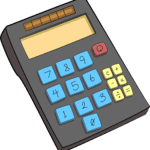Deprecated: Creation of dynamic property OMAPI_Elementor_Widget::$base is deprecated in /home2/inancjw3/public_html/wp-content/plugins/optinmonster/OMAPI/Elementor/Widget.php on line 41

Are you in the market to buy a house but are concerned about the potential of a mortgage?
Do you own a house now and feel overwhelmed by the pressure of your debt?
Whether you are buying your first house or are halfway into a 30-year loan, you can pay your mortgage off early and save money and stress.
Here are 9 different ways you can practically save money on your mortgage.
I also wanted to give you an example to follow along with to help visualize how these actually work in the real world.
For a few of these examples, we will be using this example as many people fall close to this category for homes today:
- $200,000 mortgage
- 30-year Fixed rate
- 6% interest
- $1,200 Monthly payment including principal and interest
 Extra payments
Extra payments
The first way is by making extra payments to your mortgage each year. This is a very common way that many people do.
The way this works is that each year, rather than making 12 payments, you make 13 payments. This can be done two different ways.
- You can either make a lump sum payment all at once for the total amount.
- You can divide that payment into 12 months and make 1/12th of the payment each month.
My wife and I personally do the second option as I can manage 1/12th of the mortgage cost easier in my budget than the entire thing at once.
If you were to do a lump sum payment, this can be done at any time of the year that you have extra funds. However, it actually makes more sense to do this at the beginning of the year and here is why.
What you are doing when you make an extra payment is putting all of the extra money onto the principle, not the interest.
As you continue to pay your mortgage each month, more of each payment goes toward your principle because as your loan amount drops, your interest rate drops.
If you put an extra payment in January, then your interest each month after that will be less for the remainder of the year and more of your money will go toward the principle faster, allowing you to pay off your mortgage faster.
Savings using Extra Payments
Using our example above, if you were to simply add 1 payment each year of $1,200, you would over the course of your 30-year mortgage save about $48,000 and pay the loan off in its entirety 5 years early!
 Bi-Weekly Payments
Bi-Weekly Payments
Bi-weekly payments is essentially the same thing as the extra payments option above but makes it even cheaper from a budget standpoint.
What bi-weekly payments does is it allows you to put 13 payments onto your mortgage by the end of the year by putting 26 payments toward your mortgage. This is good for people who have a strict budget but want to still pay more each month as it allows you to make smaller extra payments and still achieve your goal.
There are a few points with this option that you need to be aware of.
Point 1
Not all mortgage lenders allow this option.
Personally, I tried to do this and my mortgage provider would only do it if I drove a check down to them twice a month and handed it to their office which is 25 minutes away from my house.
The time and gas cost did not make this a viable option for me.
Point 2
You need to make sure that if your provider does have this option, it does not add fees to your statement.
Even if the fees are small, over time they will add up and negate a lot of the positive momentum you tried to achieve.
Point 3
Making sure your payment is applied upon receipt is vital. What payment upon receipt means is that when the funds are given to the mortgage lender the funds are applied immediately. If the funds are held until the end of the month, you have lost the benefit of doing bi-weekly payments.
This option is actually the fastest option as it attacks the principle the quickest.
Remember, each extra payment you make goes toward the principle and gets you toward your goal of getting rid of those pesky interest payments sooner. With this option, you are making 26 payments a year which hits the payment the most.
Savings using Bi-Weekly Payments
The savings on this payment would potentially save you a few months from the option above but it is essentially the same – $48,000 and 5 years earlier payoff.
 Refinance to a shorter term
Refinance to a shorter term
When people think of saving money on their mortgage, refinancing is probably the most common solution.
Refinancing is when you go and get a new loan for your house because your total loan amount is lower or you are able to get a lower interest rate.
Refinancing is a great option for many people as long as it is done wisely. Before you consider refinancing, I want to point out a few key points for you to be aware of so you can make the best decision in your situation.
First, there is an important extra expense many people overlook when refinancing – closing costs.
Closing costs are the fees the mortgage lender charges you to refinance your home. It is important you understand what the costs of these will be before getting in too deep with one specific lender as the costs can vary from different lenders.
These costs are added into your mortgage amount making your loan amount higher than it was before you refinanced.
For example, if you owe $200,000 on your home and want to refinance, the closing costs could be $6,000 and your loan amount would then be $206,000 ($200,000 plus $6,000).
Another important point to consider with closing costs is the break even point of the added expenses.
What this means is that the extra costs of refinancing fees will offset some of the benefit you received from getting a lower interest rate.
How does it do that?

Here is a simple example. You owe $100,000 on your home still and currently have an interest rate of 4%. You see the interest rates have dropped and can get a new loan for the same length of time that you currently have it at 3%. You talk to the mortgage lender and they will work with you but the closing costs are $3,000.
Your new loan is $103,000 at 3%.
Assuming for illustration’s sake and to keep it simple, you had a 30-year mortgage before and you keep a 30-year mortgage, this change drops your monthly payment down $56 each month. That’s great!
However, you have to understand if that actually makes sense for you, considering the break even point of the added $3,000 into your loan.
Going to a simple online mortgage refinance calculator such as bankrate.com, you learn that your break-even point is 56 months.
What that means is that the $56 lower monthly payment actually won’t have any benefit for 56 months because you added cost.
So yes, while you are technically saving money each month from what you were originally paying, you have a higher mortgage than what you originally had.
So, for 4 years and 8 months (56 total months) you will not see benefit from your mortgage refinance.
That may sound depressing, but it shouldn’t be for a couple reasons.
- Reason one: after those 56 months are over, the remaining time of your loan amount you will be saving money and have less cost on your home than you would have before.
- Reason two: during the 56 months of “no saving” you can actually reallocate the money you are saving (which happens to be $56 a month), and make the time you aren’t seeing any benefit shorter. This will keep your mortgage payment the same amount, but it will help you pay it off sooner as we saw in option 1 of making extra payments.
Savings using Refinance to a shorter loan
The scenario has multiple ways to save.
Not only can you save time by getting a shorter loan (30-year to a 20-year, 15-year, or even 10-year), but you can also keep the same loan amount, get a lower interest rate and save money each month. With that extra savings you can also put it onto your mortgage and pay it off early.
I encourage you to look at bankrate.com and check out their refinance calculator. This will allow you to put in your numbers in a way that I just can’t do on this post without making it too complicated.
Drop your PMI (or don’t have it at all)
While the three options above are all steps you can take after already having a mortgage, this is one you can do before you even get your mortgage.
 PMI is an added cost you incur on your mortgage if you put less than 20% down on your home. PMI, or private mortgage insurance, is something lender have a protection for them, not you.
PMI is an added cost you incur on your mortgage if you put less than 20% down on your home. PMI, or private mortgage insurance, is something lender have a protection for them, not you.
If you were to default on your loan, the PMI would help cover the cost for the lender and they make you, the homeowner, cover the costs.
This is simply avoided by putting 20% down on your home. This large prepayment may force you to get a smaller house, or wait longer to purchase a home but for many people, the cost benefit is worth it.
In addition to avoiding it all together, you also automatically lose the PMI on your loan once your equity reaches 22% of the home value.
So, if your home is worth $200,000, you will have PMI until your loan amount is $156,000. Once you hit that number, your loan amount should automatically drop the PMI.
Savings in dropping or avoiding PMI
Using the illustration above for the $200,000 home, your savings once you lose your PMI assuming you only put down 5% could be as high as $130 a month when it drops off.
 Lump-sum payment
Lump-sum payment
This option is not for most people, but I wanted to include it because it may come up for you depending on your circumstances.
Assuming you receive a lump-sum from an inheritance, insurance claim, bonus from work, or maybe hit the lottery, you can use a large chunk of money all at once toward your mortgage.
Savings using Lump-sum Payment
Depending on how much you put down, this could change drastically. In any situation however, the loan length drops and you therefore have to make less payments saving you money.
Recast your mortgage
Recasting your mortgage works hand in hand with lump-sum payments.
Once you make a lump-sum payment, you can recast your mortgage.
Recasting your mortgage is when the mortgage provider readjusts your payoff schedule to reflect the remaining balance and results in a shorter payment term.
Recasting your mortgage is also similar to refinancing but the fees are much lower.
The reason I included this in a different category is because not all mortgages are able to be recast. Make sure you talk to your mortgage provider to see if this is a viable option for your mortgage.
 Downsize your home
Downsize your home
An option not many people want to think about is downsizing your home.
There are two reasons you may want to do this.
- First, perhaps you simply do not need the house size your currently have and do not want to pay for the unused space.
- Second, maybe you have lost some income and can’t afford to pay your mortgage. Rather than struggling to make ends meet and taking the chance of losing your home, downsizing to a more manageable house and payment may be a great option.
Thinking through the pros and cons of this option is vital and is something you should take seriously and not rush. And these pros and cons are for you personally in your own, specific situation.
Cut other spending and reallocate money to your mortgage
Must like the above option, many people do not like to think about this as a viable option for them. However, given your specific situation, this may be the best option for you.
As a financial coach, I have encouraged my clients to do this and have seen tremendous results.
If you are really overwhelmed by that long loan, maybe there is a place in your budget where you are overspending, and the money can be better utilized on your home.
Take the time and evaluate your needs and goals and see what works best for you.
Challenge your property assessment
Property taxes are something all home owners should be aware of.
Each year, your property taxes will likely go up for a multitude of reasons depending on where you live. These costs are able to be challenged.
While it may not be likely, there are instances where your assessment may be invalid.
Perhaps they think you have a pool or a fireplace that you do not and you are paying a premium. Reach out to your municipality and see if this may be an option.
That concludes our 9 ways to pay off your mortgage early!
I hope that you saw there are options out there for you. You don’t have to be stuck in the situation you are in, feeling there is no hope! Which of these options made the most sense for you?






